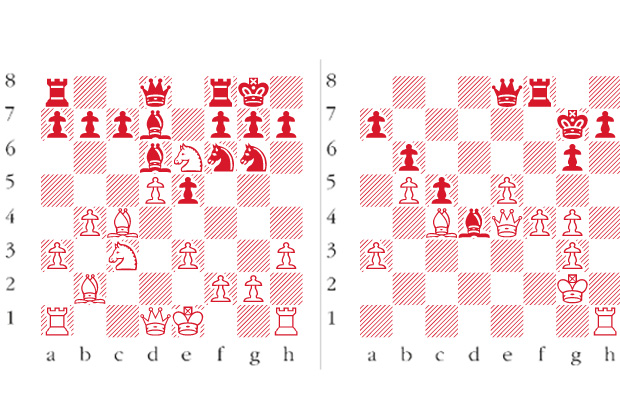The history of the world chess championship includes five title matches where the challenger was the former champion, seeking his revenge. These are Steinitz v Lasker, 1896; Alekhine v Euwe 1937; Botvinnik v Smyslov, 1958; Botvinnik v Tal 1961 and Karpov v Kasparov 1986. Steinitz and Karpov both failed in their bids to reclaim the championship, while Alekhine and Botvinnik were successful, the latter twice.
After the Candidates’ tournament in Khanty-Mansisk, the former champion Anand becomes the fifth deposed monarch of the chess world to have the chance to stage a comeback. When I organised the 2000 challenge by Kramnik to Kasparov in London, I offered Kasparov the right to an automatic return match should he lose the first time round. Chivalrously, he declined, but may have regretted this generous decision when he did in fact succumb to his younger rival.
This week, samples from the Botvinnik blueprint. He based his game on profound analysis of the psychology of his previous opponent.
Botvinnik-Tal: World Championship, Moscow (Game 3) 1961; Nimzo-Indian Defence
1 c4 Nf6 2 Nc3 e6 3 d4 Bb4 4 e3 0-0 5 Bd3 d5 6 a3 dxc4 7 Bxc4 Bd6 8 Nf3 In the later game Botvinnik-Balashov, Hastings 1966, Botvinnik sought to improve with 8 f4 clamping down on Black’s freeing move … e5. However, after 8 … c5 Black had already solved his opening problems. The fact that Balashov went on to lose had nothing to do with Botvinnik’s innovation. 8 … Nc6 9 b4 In the first game of the match Botvinnik played 9 Nb5 and went on to win. Again, in that case, after 9 … e5 10 Nxd6 Qxd6 White had achieved very little from the opening phase. 9 … e5 10 Bb2 Bg4 11 d5 Ne7 12 h3 Bd7 13 Ng5 Ng6 Botvinnik swiftly exposes this move as a blunder. Stronger is 13 … Bf5. 14 Ne6 (see diagram 1) A startling coup which inflicts damage on Black’s pawn structure and gains the advantage of the bishop pair. 14 … fxe6 15 dxe6 Kh8 Black cannot salvage his light-squared bishop since White is also threatening 16 e7+. 16 exd7 Qxd7 17 0-0 Qf5 18 Nd5 Ng8 19 Qg4 Qc2 20 Qe2 Qf5 21 Qg4 Qc2 22 Qe2 Qf5 23 e4 Qd7 24 Rad1 Rad8 25 Qg4 Typical of Botvinnik’s insightfulness. Having experienced the full force of Tal’s tactical genius in their match in 1960, Botvinnik realised that he could significantly improve his chances by offering to trade queens in almost any situation. If Tal accepted the trade, he would be entering positions that were not congenial to him. If however he avoided the exchange, he would, as here, be obliged to cede terrain or make some other concession. 25 … Qe8 26 g3 Nh6 27 Qh5 Ng8 28 Qe2 N6e7 29 Ne3 Nh6 30 Ng4 Nxg4 31 hxg4 Nc6 32 Kg2 Be7 33 Bd5 Nd4 34 Bxd4 exd4 35 Bc4 c5 36 b5 Bf6 37 f4 d3 This is pure desperation. 38 Rxd3 Rxd3 39 Bxd3 Bd4 40 e5 g6 41 Rh1 Kg7 42 Qe4 b6 43 Bc4 Black resigns (see diagram 2) Black is only a pawn down but has a miserable position. An illustration of Black’s plight is 43 … Qe7 44 g5 Bc3 45 f5 gxf5 (45 … Qxe5 46 Rxh7+) 46 Rxh7+ mating.
Raymond Keene
Vengeance is mine

issue 03 May 2014




Comments